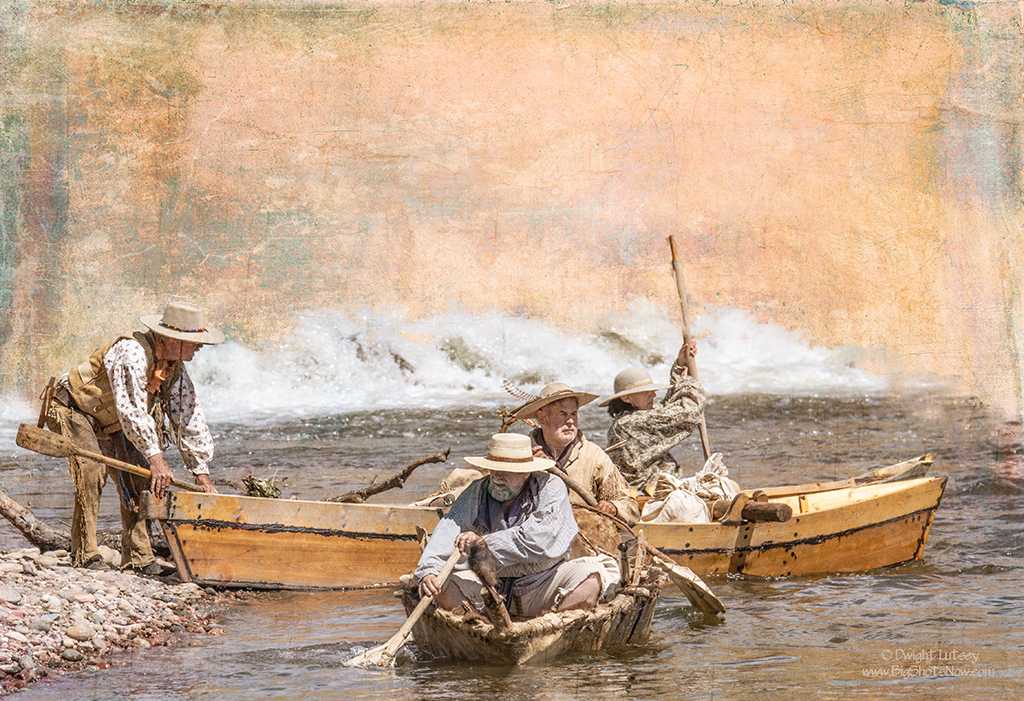
The Arkansas river is one of the major tributaries to the Mississippi river and as such has been a favorite river to travel on for fun or profit for years. More fun now than it was in the past when people used it to move goods by using small boats to carry freight from here to there so they wouldn’t have to lug it on their backs, or deal with cranky mules and other beasts of burden. A boatload of stuff gained in value when it didn’t take as much effort to get it from one place to another. It wasn’t unusual to see small wooden boats called pireaux, a form of flat bottomed canoe, floating down the river sunk nearly to the gunnels, filled with hides and other items of value. Captained by hearty but not necessary fearless captains, they traveled over placid stretches of the river, or if unlucky, through class 5 rapids when they didn’t make the cautious decision to portage around them. Traveling through class 5 rapids usually meant disaster in one form or another and was considered a mistake by those that tried it.
Another form of watercraft used on the river was a small usually two man boat called a bull boat. This was a more definite canoe shaped boat made out of buffalo hides stretched over a crude wooden frame constructed of tree parts of some type. A small log about 3-4 inches in diameter ran the length of the boat and served as its keel. Thinner branches were bent into ribs and placed perpendicular to the keel and held in place by a gunnel, which gave shape to the boat and allowed buffalo hides to be stretched over them to complete the craft. The seams between the hides were then sealed with pitch obtained from pine trees. This allowed a certain fragility to be introduced into the making of these boats as the seams were the weak link in its manufacture. However when luck prevailed these were sturdy and serviceable craft.
They were much more maneuverable than the other form of bull boats in use, which were round bowl shaped craft that were obviously designed by a committee. They were completely impossible to steer or direct in any manner whatsoever, due to not having a front or back, and being round were completely at the mercy of the wind and currents. They were used in an attempt to somehow cross a body of water while carrying people and their belongings. Normally the boatspeople in this type of bull boat wound up on the other side of the water they were attempting to cross merely by good fortune and helpful currents their constant and frantic paddling not withstanding. Their main contribution to river use was to keep the passengers less wet than if they had to wade or swim across the body of water obstructing their travel.
In the spirit ot times past the folks in the picture above are starting out with high hopes and gentle souls in the belief that they will have a delightful but uneventful trip down the Arkansas river. Given how life works we know the odds on this happening are roughly one in several hundred thousand. You have a better chance of finding a solid gold nugget the size of your ex-mother-in-laws head. One can say with certainty however, that they did have a trip. It was eventful, and their gentle souls were tested by the vagaries of river travel of which more will be written later. At this point in time the launch was successful and it looked as if it will be clear sailing ahead. May the winds be at their backs.
You must be logged in to post a comment.